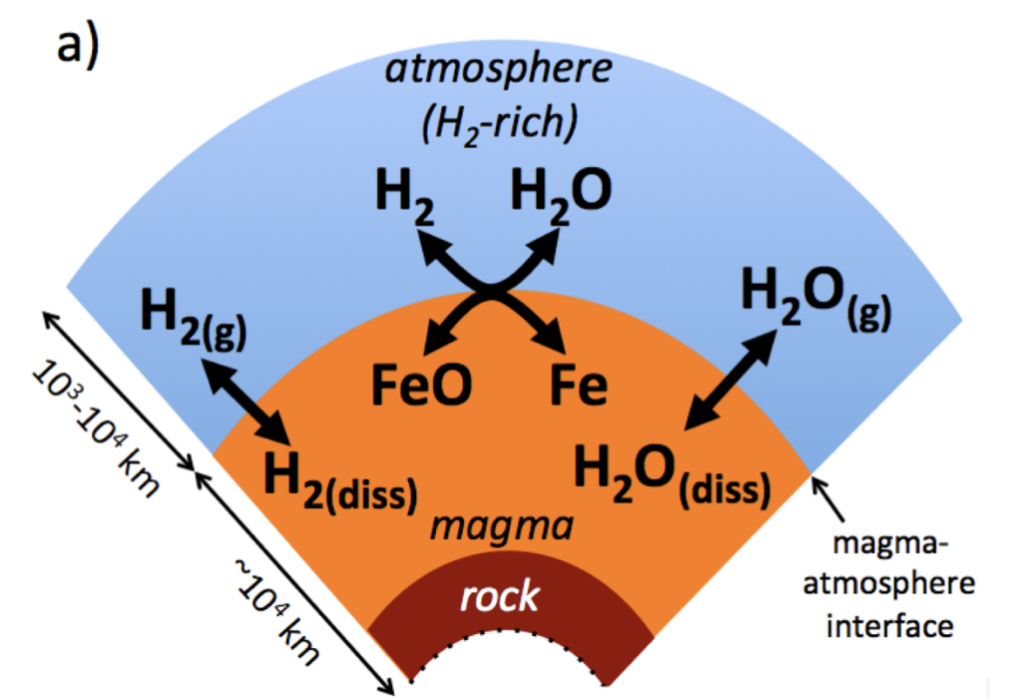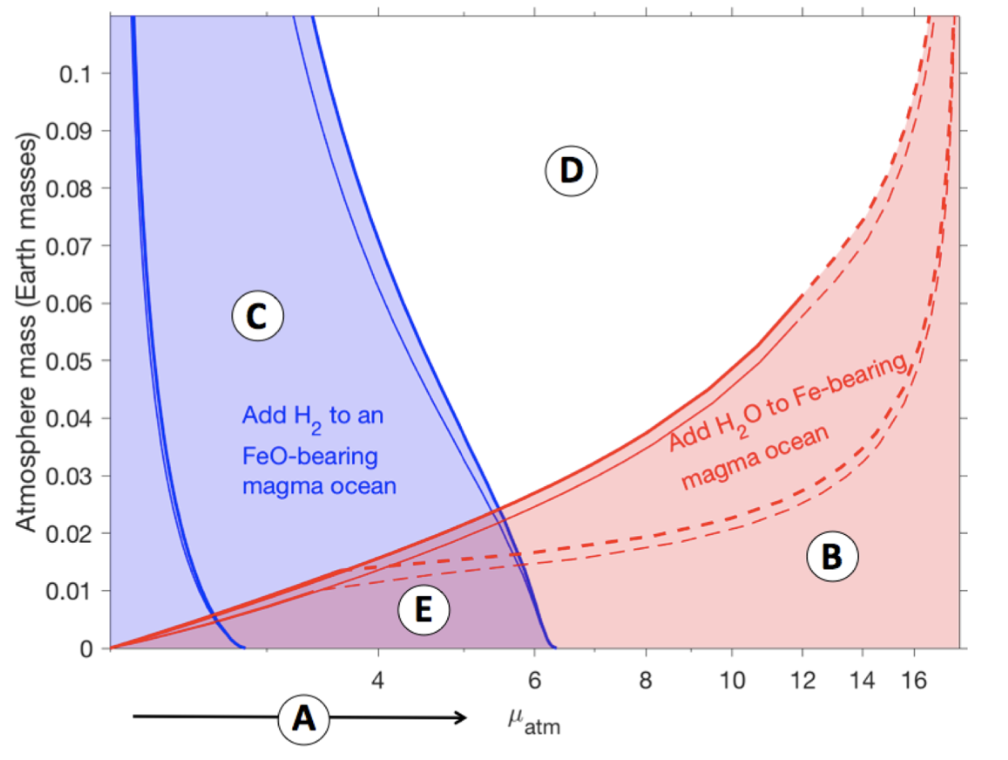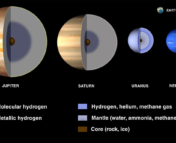Title: Atmosphere Origins for Exoplanet Sub-Neptunes
Authors: Edwin S. Kite, Bruce Fegley Jr., Laura Schaefer, and Eric B. Ford
First Author’s Institution: Department of the Geophysical Sciences, University of Chicago, Chicago, IL, USA
Status: Published in ApJ
One of the hottest topics in astronomy is finding potentially habitable planets. Many telescopes are working to unveil these planets, such as Kepler, TESS and the recently launched JWST. To verify habitability, we must understand the planet’s surface environment. However, we currently cannot directly see the planet’s surface. The only method to probe the environment is through the transmission spectrum of the planet, which can trace the presence of water and other molecules in the exoplanet’s atmosphere. In short, the transmission spectrum measures the variation of the transit depth at different wavelengths. With limited observations, different theories and models are required to infer the surface and interior composition of the planet through observations of the atmosphere. Today’s paper investigates the interaction between atmosphere and magma, aiming to determine where the hydrogen and oxygen in the atmosphere came from. The evolution from an initial ‘seed’ to a habitable planet is a long march. This work helps us understand one key step in it.
Earth-sized rocky (or terrestrial) planets are prime candidates for hosting life, simply because we best understand Earth-based life. However, their small size relative to their host stars prevents us from characterizing their atmospheres, because the transit depth is small. Sub- Neptunes, with a radius of 1.6 – 3.2 Earth radii and a density of < 4g/cm^3, are easier to observe than Earth-size planets due to their larger size. Our current knowledge of rocky sub-Neptunes assumes that they consist of a core, rocky shell, magma shell, and atmosphere from center to the surface, shown in Figure 1. Based on this assumption, the atmosphere-magma interactions are expected to dominate the atmosphere mass and composition. This work investigates the two most significant interactions shown in Fig.1: the dissolution of the atmosphere into the magma and chemical reactions involving atmosphere and magma, and explains how these effects shape the atmosphere.

The authors assume planets with only Fe, Mg, Si, O, and H. However, as the abundances of elements remain unclear, they are taken as free parameters in the model. Only iron can react with water to form hydrogen and iron oxide. Solution equilibriums of hydrogen and water vapor are also accounted for: gas can be absorbed by the magma, changing the mass and content of the atmosphere. The temperature of the magma-atmosphere interface is fixed at 3000 K. Then the authors build a model to calculate the mass of molten rocks, i.e., the magma mass. With the chemical properties extrapolated from experimental data, they solve the equilibrium state of the above physical and chemical processes and get the hydrogen mass in the atmosphere, hydrogen mass in magma, water mass in the atmosphere, and water mass in magma.
In this work, the researchers study the equilibrium state in two different scenarios. One is when the initial hydrogen comes from nebula accretion, and the magma contains iron oxide content like Earth. In this scenario, iron oxide reacts with hydrogen and forms iron. As more nebular hydrogen is accreted, more hydrogen is generated. However, due to the high solubility of water, most is dissolved in the magma. The atmosphere is still dominated by hydrogen, resulting in a lower mean atmospheric molecular weight. The other scenario is the initial hydrogen is generated by the iron and water in the planet, and comets and hydrated asteroids bring water to the planet as the initial water. As the initial water grows, it gradually becomes the main component in the atmosphere, and the mean molecular weight continuously increases up to >10 times the hydrogen mass.
These results show magma matters. For example, assume we know the radius of a five-Earth-mass sub-Neptune and the hydrogen all comes from nebula accretion, the volatile mass is still undetermined because of the undetermined iron oxide fraction in the planet. The discrepancy is even more prominent when we compare with the results in which we neglect gas dissolution. It also hints that the radius is harder to increase or decrease than previously thought, because of the considerable amount of dissolved gas buffer in the magma. Fortunately, equipped with mean molecular weight and atmospheric mass observation, one can potentially figure out the origin of the planet’s atmosphere, as is shown in Fig. 2.

This work adopted a simplified model with many assumptions and limitations; for example, most chemical data they used have not been verified by lab and/or numerical experiments. However, it still indicates that the atmosphere should not be treated as an isolated layer. As more realistic models are created in the future, a more thorough and precise magma-atmosphere interaction picture will be presented in front of our eyes. With this picture, we can further investigate how a planet can have an atmosphere appropriate for life, and finally, how can a planet be habitable.
Astrobite edited by Jason Hinkle
Featured image credit: earth.com




